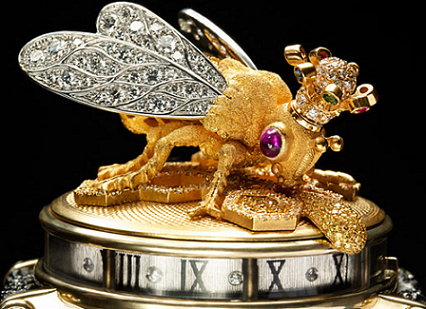The Luxury Watch Economy
Friday, January 02, 2009
From time to time, I like to conduct statistical analysis of things that I find interesting. It can be anything, but most likely it will be about something irrelevant, which I can analyze in a few minutes.
Today, I completed my second data gathering point exercise on full page advertisements for luxury watches in a securities trading magazine. I got my first data point 6 months ago: out of 120 pages, there were 12 full page ads about luxury watches: that's 10% of the magazine dedicated to just watches. My second data point is from today, with 16 full page ads about luxury watches out of 124 total pages: that's 13% of the magazine.
These type of magazines are targeted to the trader want-to-be or the professional trader for whom money is not an object. The thing is full of advertisement of high-end wines, whiskey, and, of course, watches. There are a couple of interesting articles, but mostly vacuous theories on chart reading, market timing, and silly things like CAPM analysis. You also get a short bio of a famous or successful trader. Not everyone is a multimillionaire hedge fund manager, but the pictures of the traders (all of them mostly men) seem to have 2 things in common: Brioni suits and luxury watches.
Again, this is a pointless observation, but I haven't quite understood why this particular segment of the population is so hung-up on luxury watches. Maybe it's one of the first things people notice: the watch.
I understand that the suit and the watch are part of the aura of success that has to surround this industry. This is nothing new, and we've seen it played in history countless of times: over accessorizing to portray status. Quentin Bell writes in
On human Finery, "The history of fashionable dress is tied to the competition between classes, in the first place the emulation of the aristocracy by the bourgeoisie and then the more extended competition which results from the ability of the proletariat to compete with the middle classes....Implicit in the whole is a system of sartorial morality dependent upon pecuniary standards of value."
With this in mind, it shouldn't be so surprising that as we try to emulate more successful people than us we start to dress, act, and talk like them. Marketing and advertising, as sciences of selling, exploit this evolutionary trait at every opportunity. That's not to say that we shouldn't try to understand what makes successful people successful. My point is that there is a difference between mentorship and mimicry, which can lead to plain idolatry.
This banal attempt to sell overpriced watches reminds me of the character Patrick Bateman in the 2000 movie
American Psycho, played by Christian Bale, when he studies his friends' business cards with excruciating detail trying to figure out if his cards are made with better paper and ink. Both sound so shallow, as we know better; what's more, I'd think that we're trained to spot the smoke and mirrors when placed in front of us. But perhaps not, as we've have come to understand that expensive clothing, jewelry, and accessories are symbols of high status.
Finally, in my analysis, I only look for luxury watch ads; the actual content of the magazine has close to 50/50 ratio of ads vs. content. Maybe that's another quick data point I should start gathering; but maybe it's just the accepted ratio of ads and content: even The Economist and Business Harvard Review, which are considered to be more reputable among glossy publications, are full of ads for different products from oil companies, MBA schools, to weird looking exercise machines.
This watch, tacky and horrible as it is, is worth $150,000.

Comments: